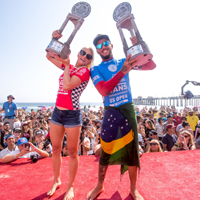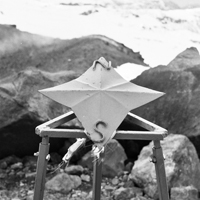
Hours after posting the initial story about the potential Billabong takeover, last night came more news as Billabong and Nixon announced the partial sale, or 48.5% of Nixon, to Trilantic Capital Partners (not to be confused with Texas Pacific Group which put in a bid earlier in the morning for Billabong for $766 million). The partial sale of Nixon to TCP will be for $285 million, which is clearly one of Billabong’s key brands, and is intended to go towards Billabong’s debt problems.
According to Australian News, AAP, Chairman Ted Kunkel said Billabong needed a solution to its debt problems which offered certainty.
“The board could not risk the future of the company and ignore the bird in the hand to explore any last minute, highly conditional, non-binding proposal that had the ability to leave the company exposed given the current pressures on our balance sheet,” he told analysts.
In addition, Billabong announced a radical slimming, eliminating 450 jobs globally, and closing between 100-150 stores.
In terms of the Nixon deal, Billabong (a.k.a. The Group), will retain 48.5% of Nixon and Nixon’s founders including Andy Laats and Chad DiNenna, will purchase 3% of their brand as well.
For Nixon, this transaction is great news, especially when its parent company is going through serious financial strain.
In a press release, Andy Laats said: “This is exciting news. To be back in the owner’s seat with this committed team in addition to the forces of Billabong and Trilantic represents the next step in our continued mission to elevate Nixon to a world-class brand.”
Overall, surfing has been going through difficult times, but it’s not like the writing hasn’t been on the wall for years (for more, see our Youth Culture Studies). In our story “How Surfing Is Going Through Its Own “Arab Spring–The Soul of Surfing Under the Spotlight” we detail not only how the top pro surfing competition series is under scrutiny, but also what’s happened to the brands that made up the surf scene over the past decade.
With the Billabong changes and partial sale of Nixon, it’s clear that Nixon, which is mainly a watch and accessory brand, is seen as a key investment opportunity, perhaps even more important than Billabong, which bought the watch company for $55 million in 2006.
Action sports in general has been undergoing significant changes (do a key word search on Label Networks for more), not only among brands and consolidations, but most importantly, among youth culture consumers that are just not that into it anymore. In our story “The Decline of Action Sports Lifestyle -A Wake-up Call to an Industry That Still Thinks It’s Hot,” from our participation data and influences charts and graphs, it’s clear that some pockets of various sports are highly important to this new generation—a generation that has basically experienced their entire teens in a recession–but there’s more crossover and shifts than ever before. Many action sports brands have actually missed the shifts, and instead, continue thinking they know their consumers when in essence, that boat’s sailed on just as fast as the managers/owners have gotten older.
The Billabong shake-up doesn’t mark the beginning of this change in action sports, and surfing in particular, but actually is the result of a ripple effect among a new demographic creating trends that have been lumbering on and reshaping the scene for years.


